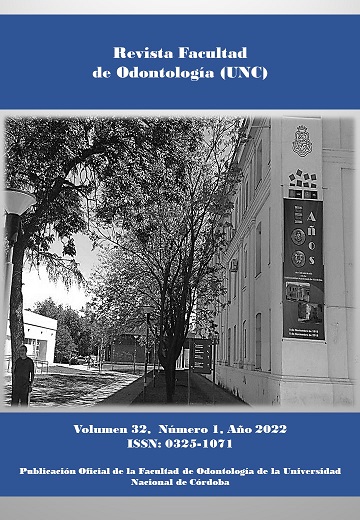Biotechnology and oral health: Probiotic therapy to prevent dental caries
Keywords:
Probiotics, dental caries, biotechnology, oral healthAbstract
Probiotics are viable microorganisms that, when properly administered, provide health benefits to the host. Probiotic therapy has been used successfully to control intestinal diseases and is currently considered as a new strategy for the prevention of diseases of the oral cavity. Probiotic therapy to prevent dental caries proposes the use of beneficial microorganisms with the ability to displace cariogenic microorganisms and colonize the oral cavity. In this editorial we will comment, with a biotechnological approach, on the application of probiotic therapy to prevent dental caries
References
1. Sivamaruthi BS, Kesika P, Chaiyasut C. A Review of the Role of Probiotic Supplementation in Dental Caries. Probiotics Antimicrob Proteins. 2020;12:1300–9
2. Amargianitakis M, Antoniadou M, Rahiotis C, Varzakas T. Probiotics, prebiotics, synbiotics and dental caries. New perspectives, suggestions, and patient coaching approach for a cavity-free mouth. Appl Sci. 2021;11
3. Allaker RP, Stephen AS. Use of Probiotics and Oral Health. Curr Oral Heal Reports. Current Oral Health Reports; 2017;4:309–18.
4. Baker JL, Edlund A. Exploiting the oral microbiome to prevent tooth decay: Has evolution already provided the best tools? Front Microbiol. 2019;10:1–7
5. Goh YJ, Barrangou R. Harnessing CRISPR-Cas systems for precision engineering of designer probiotic lactobacilli. Curr Opin Biotechnol. Elsevier Ltd; 2019;56:163–71.
Published
Issue
Section
License

This work is licensed under a Creative Commons Attribution-NonCommercial-ShareAlike 4.0 International License.
Aquellos autores/as que tengan publicaciones con esta revista, aceptan los términos siguientes:
- Los autores/as conservarán sus derechos de autor y garantizarán a la revista el derecho de primera publicación de su obra, el cuál estará simultáneamente sujeto a la Licencia de reconocimiento de Creative Commons que permite a terceros:
- Compartir — copiar y redistribuir el material en cualquier medio o formato
- La licenciante no puede revocar estas libertades en tanto usted siga los términos de la licencia
- Los autores/as podrán adoptar otros acuerdos de licencia no exclusiva de distribución de la versión de la obra publicada (p. ej.: depositarla en un archivo telemático institucional o publicarla en un volumen monográfico) siempre que se indique la publicación inicial en esta revista.
- Se permite y recomienda a los autores/as difundir su obra a través de Internet (p. ej.: en archivos telemáticos institucionales o en su página web) después del su publicación en la revista, lo cual puede producir intercambios interesantes y aumentar las citas de la obra publicada. (Véase El efecto del acceso abierto).

